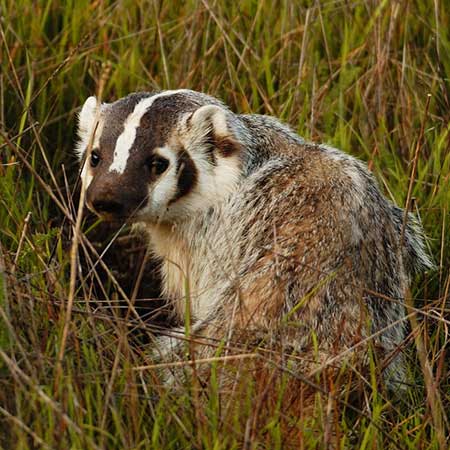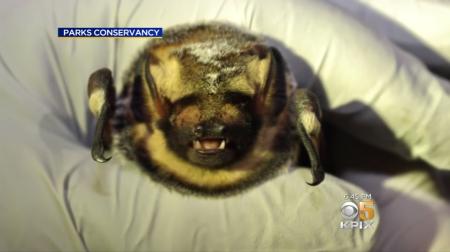Why Was This Indicator Chosen?
The American badger (Taxidea taxus) may be found in larger patches of grasslands and coastal scrub habitats where they prey upon small mammals. This California Department of Fish and Wildlife-designated sensitive species (CDFW, 2016) was historically persecuted by ranchers and is vulnerable to habitat fragmentation and habitat loss, vehicle strikes, and rodenticide exposure (Lay, 2008).
What is Healthy?
American badgers are detected at all Marin Wildlife Picture Index Project camera locations in grassland or coastal scrub habitat patches greater than 1,000 acres in the One Tam area of focus.
What Are the Biggest Threats?
- Human impacts including habitat loss, fragmentation, and development, vehicle strikes, rodenticide exposure, and the residual effects of past land uses and trapping
What is The Current Condition?
The current status of American badgers on Mt. Tam is Unknown. At the time that this project was completed, no American badgers had been detected by Marin Wildlife Picture Index Project cameras. However, in the years since, this species has been sighted in the One Tam area of focus. Cameras on nearby Marin County Parks lands outside of the One Tam area of focus have also captured photos of badgers.
What is the Current Trend?
The trend is also Unknown, as there is not currently enough data to assess the trend of American badger numbers on Mt. Tam.
How Sure Are We?
Because American badgers had not been detected on in the One Tam area of focus, our certainty level is also Unknown.
What is This Assessment Based On?
Baseline data are still being established for this species.
What Don’t We Know?
Key information gaps include:
- Inventory data on American badgers in the One Tam area of focus



